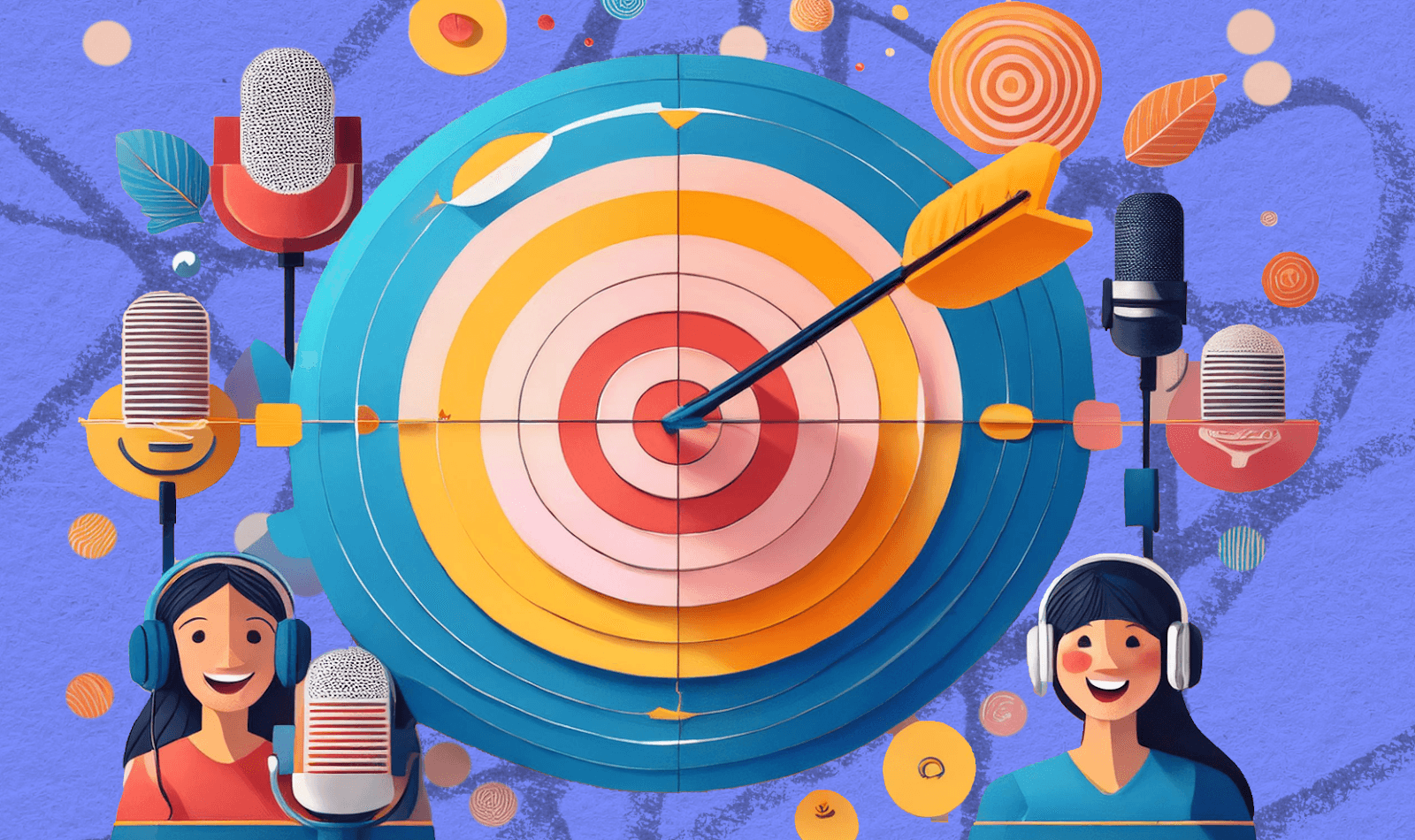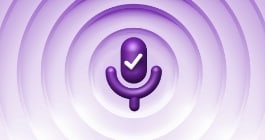Unlock more with the Adobe Podcast Premium plan 
- Video support for MP4, MOV, and more
- Bulk upload files for enhancement
- Adjust strength for a more natural sound
- Enhance up to 4 hours a day, files up to 1 GB
- No download limits on Studio projects
- Download original recordings, speaker-separated
- Customize audiograms and captions with themes
- Upload custom backgrounds for audiograms
- All Premium features for design
Enhance Speech
Studio
Design with Adobe Express Premium
How to start a podcast (that listeners actually want)
Tuning into your audience: The key to a podcast that resonates.

Last updated: April 12, 2025
Author: Nick Epson, Voice-first product marketer
If you’re starting up a podcast, you have to balance two very important guiding principles: your vision versus what people actually want. And, unfortunately, the two won’t always align.
This shouldn’t come as a surprise, especially if you’ve ever had the experience of introducing something you think is awesome to a friend, but instead of lighting up with joy, looking at them is like peering into the cold, dark void of space. They don't care. You failed to merge their interests with your own.
In this article, we’re going to reflect on a recent interview with a production expert, Kevin O’Connell, to help explain the importance of learning as much about your potential listeners as possible. Kevin’s a professional audio and video production specialist with a background in podcasting and music. Plus, he’s the Director of Audio & Video Post Production on The Mel Robbins Podcast, which is currently the #1 ranked podcast.
So, yeah, he knows a few things about podcasts.
Ask yourself: what are my goals and who will care?
During the initial planning phase of your podcast, like when you’re deciding on a name and building your foundation, you’ll need to think beyond just your purpose and why listeners will care what you have to say.
You might have rock-solid ideas and a glossy collection of credentials, but creating material people truly want to listen to means considering the human elements of your listeners.
“You can talk freely—you can do anything you want—but if you're trying to start a real conversation or, talk about something that interests you and what you might interest other people. Then, you got to think about how you would want to receive that.” – Kevin O’Connell, Audio & Video Production Expert
This means a couple of things need to come together:
- It needs to be interesting or of monumental importance to you, or losing interest is nearly certain.
- Other people need to care, or you need to figure out how to make them care.
Let’s start by looking at how to assess topics to gauge how much people care about a given subject.
Determining if there’s an audience for your idea
You need to be realistic when looking at information, both quantitative and otherwise when refining your podcast’s goals.
Before outlining topics, it’s a good idea to review material already floating around on target subjects. You should try to look at multiple platforms and snoop around social media, as well as popular podcast platforms like Apple Music, Spotify, and YouTube.
The more detailed you are, the better. Social media and search engines are designed around a kind of “popularity contest” that tries to favor sources with high EEAT (Experience, Expertise, Authoritativeness, and Trustworthiness) but is subject to human conditions like bias, attentiveness, and beyond.
“You also need to talk to, or at least observe, other people by asking what they like, and focusing on the details. Start with family friends, family, and colleagues, to find out what they’re listening to. Even if it’s something you don’t find interesting, listen and think about everything from delivery to design.” — Kevin O’Connell
Feedback from real people (even if it’s through a social media post) in and around your circle is a good way to get a “feel” for what people like.
In addition to this more qualitative assessment, it’s a good idea to look deeper and see what kind of hard data you can uncover.
Finding data to gauge interest
Beyond listening, you can dig a little deeper by looking at traffic for different topics, like marketers do for businesses in other industries. Before getting all fancy with expensive subscriptions to powerful marketing tools, put the following tips to use:
- On social media, experiment with various hashtags, then search the most popular ones to see what content appears and how users engage with it.
- Use the “Discover new keywords” and “Get search volumes and forecasts” in Google Keyword Planner to find and evaluate keywords—take note of search volumes, run searches on what you find, and review content that appears.
- For more niche topics, participate (or at least lurk) on relevant forums and on Reddit as these typically contain the most authentic conversations on the web.
Keep in mind that all people (including yourself) all have at least a little bit of baked-in bias, which influences how we perceive and accept information. People mostly seek out data that supports their beliefs, for better or worse, which you’ll need to keep in focus when generating and outlining ideas.
Creating audience personas
Most marketing efforts often rely on identifying certain personas within an audience as they help to visualize how different ideas and interests can intersect for individuals, which is useful for understanding motivations (i.e., why someone might feel a certain way) and often, predicting future behavior.
Personas are useful for brands as a tool for understanding listeners—while these personas can be highly detailed, you can get started building personas with simple exercises.
“It’s like this: I have an idea brewing. I’m writing down some ideas of what I'm going to make a podcast about, and who the type of person might be or could be that would be interested in what I have to say.
Then I think of them as like a character where I say, ‘Okay, this is Sally and Sally really loves this type of lifestyle.”
From here, I start to fill in little details. These are the things she likes, and how she spends her time. This is what her day-to-day life is generally like. And these are the ways in which I think she would connect to this idea.
Then I go to the next one, and I say, ‘Then there’s this dude, Joe. Joe does this and that, and I think he will likely connect with X, Y, and Z. These may be a little different than Sally, but maybe they align somewhere else.
After I create these personas, I can usually find them in real life. So, when I realize Sally is just like my cousin, I FaceTime her, and talk to her to further my understanding of what Sally might like.
That's my pinnacle of listener research.” — Kevin O’Connell
You’re basically examining your own biases as you say, “Person X probably likes Y and Z,” and either solidifying your understanding of something or adapting views around what you learned. Building loose personas like Kevin described in the quote above is an excellent way to gain insight that helps create engaging material for the people identified.
Check your beliefs to create engaging podcast material
Understanding your audience on a deeper level isn’t just insightful—it’s transformative. By gathering data and creating your own personas, you can start to make content engaging, meaningful, and accessible.
Don’t just take our word for it—start exploring the power of audience insights today. Use Adobe Podcast to fine-tune your messaging and delivery, and see firsthand how data-driven storytelling can elevate your content. The right insights can make all the difference—so why wait? Dive in and start creating today.
About the author: Nick brings 15+ years of experience across product development and content marketing, especially in the telecom and VoIP space. He’s passionate about clear messaging, crisp audio, the impact of voice, and building tech that actually connects.



